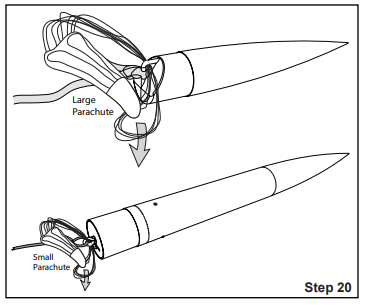I am looking over this PDF i found online and here is a snippet of what it shows to do for chute order:

Since i personally have not done a dual deployment yet, i am going to test it out on a new loc-iv kit i got. I am making the switch band and sled this week.
In my mind, i see the nose cone getting popped off first from electronics, then motor ejection OR electronics pop off the upper section of the rocket (the section that had the nose cone on it) and the main chute comes out. I see it this way in case electronics fail, at elast, hopefully, the motor ejection will deploy the main chute.
Or am i visualizing what and how things are done?
In the image above, the motor ejection (backup) would deploy the drogue if electronics fail, is that correct? Also, can a rocket land on a drogue at least somewhat safely?
thanks
I have had to take a break from rockets for about 8 months while i focus on graduating school and i had no money : )
Since i personally have not done a dual deployment yet, i am going to test it out on a new loc-iv kit i got. I am making the switch band and sled this week.
In my mind, i see the nose cone getting popped off first from electronics, then motor ejection OR electronics pop off the upper section of the rocket (the section that had the nose cone on it) and the main chute comes out. I see it this way in case electronics fail, at elast, hopefully, the motor ejection will deploy the main chute.
Or am i visualizing what and how things are done?
In the image above, the motor ejection (backup) would deploy the drogue if electronics fail, is that correct? Also, can a rocket land on a drogue at least somewhat safely?
thanks
I have had to take a break from rockets for about 8 months while i focus on graduating school and i had no money : )
Last edited:



